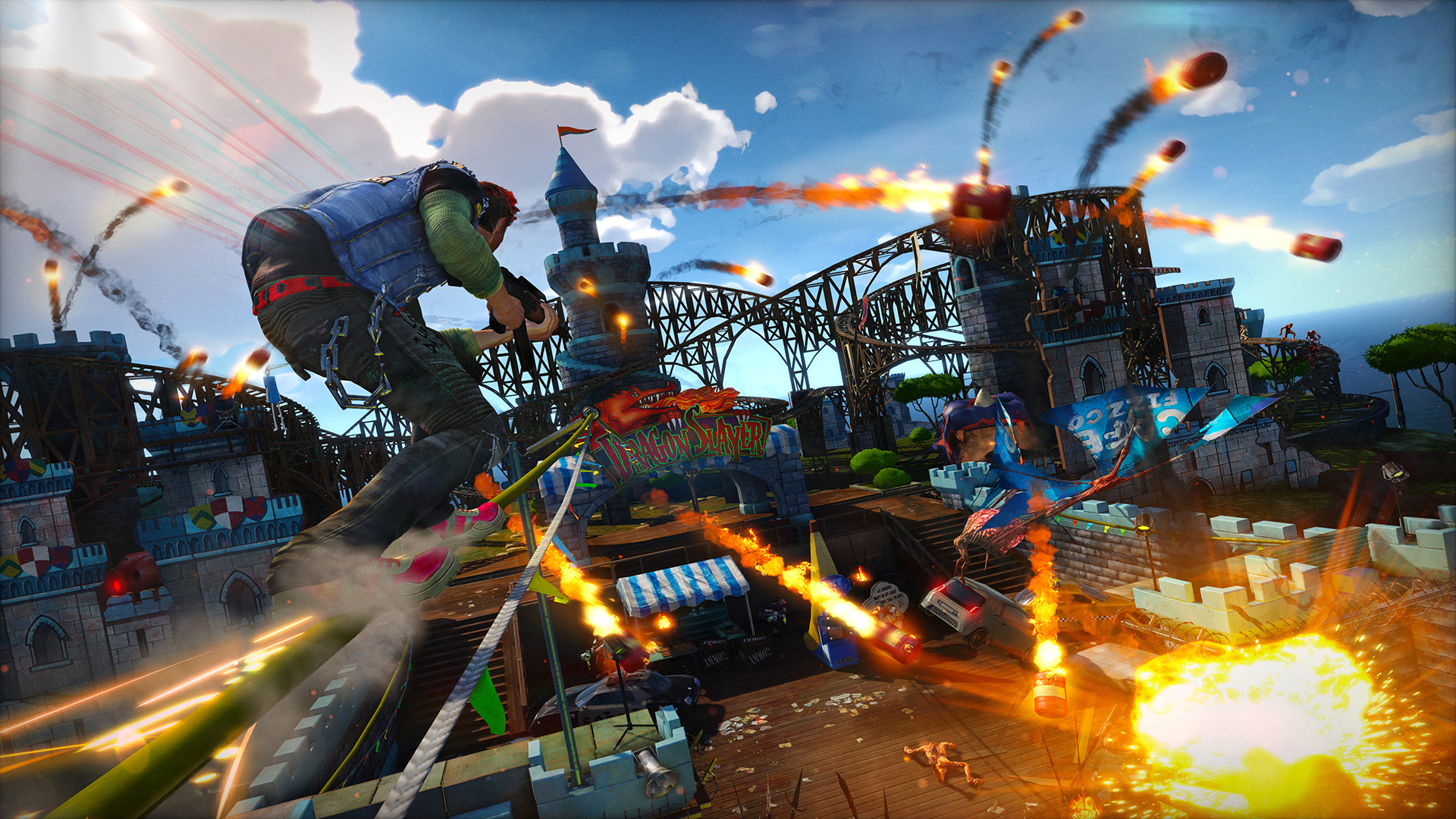Armored Core 2, one of the most iconic video games of the early 2000s, is still renowned as a classic within the gaming world today. Released in 2000, Armored Core 2 is a mecha-based combat simulation game developed by the Japanese game company, FromSoftware. The game’s premise is centered on the player, who takes on the role of a fully customizable mercenary in a dystopian future.
As one of the PlayStation 2’s early games, Armored Core 2 provided a significant breakthrough in the gaming industry, demonstrating the PS2’s graphical capabilities and its improved processing power. Armored Core 2 also represented an evolution in the game’s story-telling and art direction, solidifying a franchise that still endures to this day.
In the following sections, we will delve into the mechanics, design, and sound of Armored Core 2, providing a comprehensive review and evaluation of the game. We will provide a professional and concise analysis of the game’s impact, gameplay, graphics, sound design, replayability, and its overall score based on a scale of 1 to 10.
Armored Core 2’s Gameplay Mechanics
Armored Core 2 is a third-person mecha shooter game that presents the player with diverse weapons, intricate robot designs, and action-packed missions. It is not a game for the faint-hearted, and it requires extensive learning and skill to master its gameplay mechanics. In Armored Core 2, players take on the role of a Raven, a mercenary who pilots a customizable mech called an AC. These robots are a formidable force and offer you various customization options to choose from.
The game’s objectives are straightforward: take on missions from clients, complete them, and earn rewards and upgrades. The story is set in a dystopian future where governments are weak, and corporations control everything. The missions are varied and range from simple transportation jobs to all-out battles against other Raven pilots. Each mission presents unique challenges, requiring a strategic approach, and well-timed movements to achieve victory.
Controlling the AC may seem daunting at first, but the game provides an intuitive learning curve. The left thumbstick controls movement, while the right thumbstick moves the camera. The L1 and R1 buttons allow strafing left and right. The game also features a multiplayer mode, allowing gamers to play against each other online.
In-game features include a full workshop for customizing, enhancing and upgrading the pilot’s AC. The players can change their mech’s weapons and parts, upgrade its abilities, and paint it any color they desire. Armored Core 2 offers an extensive series of customization options, providing players with unique playstyles.
In conclusion, Armored Core 2’s gameplay mechanics are well-crafted and offer hours of fun for players willing to put in the effort to master it. Its story and varied missions are enough to keep players engaged throughout. The game’s controls are intuitive, and the customization options provide valuable replayability.
Graphics and Visuals
When it comes to Armored Core 2, the visuals are an essential component that adds to the player’s overall experience. Even though the game is a retro title, the graphics hold up well in today’s standards. The game’s polygonal environments are highly detailed, with various effects that enhance the game’s overall ambiance.
The art style and design choices of Armored Core 2 complement the game’s post-apocalyptic theme, with metallic and dingy aesthetics dominating the game’s visual identity. The game’s mechs or “corsairs” are well detailed, featuring the signature Mecha design the Armored Core games are known for. The use of different color schemes for the mechs is also an excellent touch that distinguishes each vehicle apart from the other.
When comparing Armored Core 2 to other games of its time, it holds up surprisingly well, even with the PlayStation 2’s graphical limitations. The level of detail in both the in-game environments and the corsairs are highly impressive. Looking back, one also realizes that the game was a technical marvel of its time.
However, it is important to note some flaws with the graphics. There are moments where there is a drop in frame rate, movements on some units seem unnatural and blocky, and the resolution is low by today’s standards. Nevertheless, these issues are only occasional and do not significantly hinder the user experience.
Overall, while there are some flaws, Armored Core 2’s graphical capabilities still hold up and rivaled some of the games from its era. The game’s art style and design stand the test of time, and coupled with the action-packed gameplay make for a definitive sensory experience.
Sound Design
Armored Core 2’s sound design is one of its defining features. The game’s sound effects, voice acting, and music work together to create an immersive experience for the player. The ambient noises of the in-game world – machinery whirring, engines revving, and weapons firing – provide a rich and detailed atmosphere.
Voice acting plays a significant role in the game, delivering the story and driving the narrative forward. The voice actors help bring the characters to life, and the quality of the voice acting is generally high. It is essential to note that the game features voice acting in Japanese with English subtitles.
The game’s soundtrack is a mix of fast-paced, futuristic electronic beats, and slow, atmospheric pieces. The music enhances the game’s immersive atmosphere, and their timing is perfect, making the player feel more engaged with the game’s events. In contrast, the slower pieces provide moments of reflection and contemplation, leaving a lasting impact even after the game has ended.
The game’s sound quality is impressive, considering the technological limitations of the PlayStation 2 era. Armored Core 2’s sound design sets a benchmark and was ahead of its time, with few games able to achieve its level of audio quality.
In comparison to other games of its time, Armored Core 2’s sound design is a standout feature. It credibly immerses the players in its world and story, creating a perfect combination of the audio with the gameplay.
It is clear that sound design is an essential aspect of Armored Core 2 and significantly contributes to its overall quality. It is a must-play game for any video game enthusiast and a testament to the importance of quality sound design in video games.
Replayability
Armored Core 2 offers plenty of replayability to keep gamers coming back for more. Here are a few reasons why:
– Missions: The game includes a variety of missions, each with their unique objectives and challenges. With no two missions being identical, it offers a different experience every time.
– Multiple endings: Armored Core 2 has four possible endings determined by the choices made by the player during the game. This feature adds to the replay value of the game, allowing gamers to explore different paths and outcomes.
– Customization: Customization plays a massive role in Armored Core 2. Gamers can customize their mechs for different missions, which adds more depth to the gameplay. Trying out different configurations provides an opportunity to have a fresh experience with the game.
– Mastery: The learning curve in Armored Core 2 is steep, and mastering the game can take several playthroughs. Investing time and effort into perfecting your playstyle is incredibly satisfying.
Compared to other games of its time, Armored Core 2 stands out for its level of customization and branching paths that add to the game’s replay value. Overall, the game’s replayability is one of its strongest features, making it worth revisiting even years after its release.
Difficulty
Armored Core 2 is a challenging game that can be both rewarding and frustrating. The difficulty level is balanced to cater to both casual and hardcore gamers. The game offers an enjoyable gaming experience that challenges players while immersing them in the world of the game.
The learning curve of the game is well-structured to ensure players understand the controls and movements before they embark on their journey. The first few missions serve as a tutorial to introduce players to the game mechanics and basic strategies. As the game progresses, the missions become more complex, and players are required to use more advanced tactics and strategies to complete them.
Armored core 2 has a reputation for being one of the most challenging games of its time. The game’s difficulty requires players to perfect their skills to progress. Players must customize their mechs to adapt to various mission conditions, such as the environment and the enemy type. The more challenging missions require a combination of strategic thinking, quick reflexes, and knowledge of the game mechanics to accomplish them successfully.
In comparison to other games of its time, such as Zone of the Enders and Robotech, Armored Core 2 offers a higher level of difficulty. While other games of its era provide relative ease and accessibility to novice players of the video game industry, Armored Core 2 provides a more in-depth and challenging experience.
In conclusion, Armored Core 2 is a challenging game that provides an immersive and intellectually stimulating experience. Its difficulty level is well-balanced to cater to both casual and hardcore gamers. The game poses challenges and requires mastery of the game mechanics to progress continuously. Its difficulty level sets it apart from other games of its time and is a significant factor contributing to its popularity among players.
Conclusion and Overall Score
After a comprehensive evaluation of Armored Core 2, it is clear that this game offers an exciting and unique experience for players of all skill levels. The game’s diverse gameplay mechanics and customizable features make it stand out among other games of its time and still hold up today.
In terms of gameplay, Armored Core 2 offers a challenging and exciting experience with its intricate controls, deep customization options, and varied missions and objectives. The game also features excellent graphics and sound design that truly immerses players into the futuristic world of the game.
Overall, we give Armored Core 2 a solid score of 8 out of 10. While it may not appeal to everyone, this game is a must-play for fans of action and sci-fi games. It’s recommended for gamers who enjoy challenging gameplay and appreciate games with a high level of customization.
In conclusion, Armored Core 2 continues to stand out as an excellent example of a retro video game that has stood the test of time. It still holds value for gamers seeking a great gameplay experience. We hope this review assists gamers in making an informed decision about whether or not they will enjoy playing this classic game.
FAQs
1. What is Armored Core 2?
Armored Core 2 is a video game that was released in 2000 for the PlayStation 2. It is a mech-based action game where players control customizable mechs and complete various missions.
2. What is the gameplay like?
The gameplay in Armored Core 2 is fast-paced and action-packed, with players controlling their mechs through various missions. The game offers a high level of customization, allowing players to upgrade their mechs with new weapons and abilities.
3. How are the graphics in Armored Core 2?
The graphics in Armored Core 2 are impressive for a game released in 2000. The game features detailed mechs and environments, although some textures may appear blurry when viewed up close.
4. Can the game be replayed?
Yes, Armored Core 2 has a high level of replayability. The game offers multiple endings depending on the player’s choices, and players can replay missions to earn better rankings and rewards.
5. Is Armored Core 2 difficult?
Armored Core 2 has a moderate difficulty level, with a learning curve that may be challenging for new players. However, the game offers a range of difficulty options to cater to both casual and hardcore gamers.



